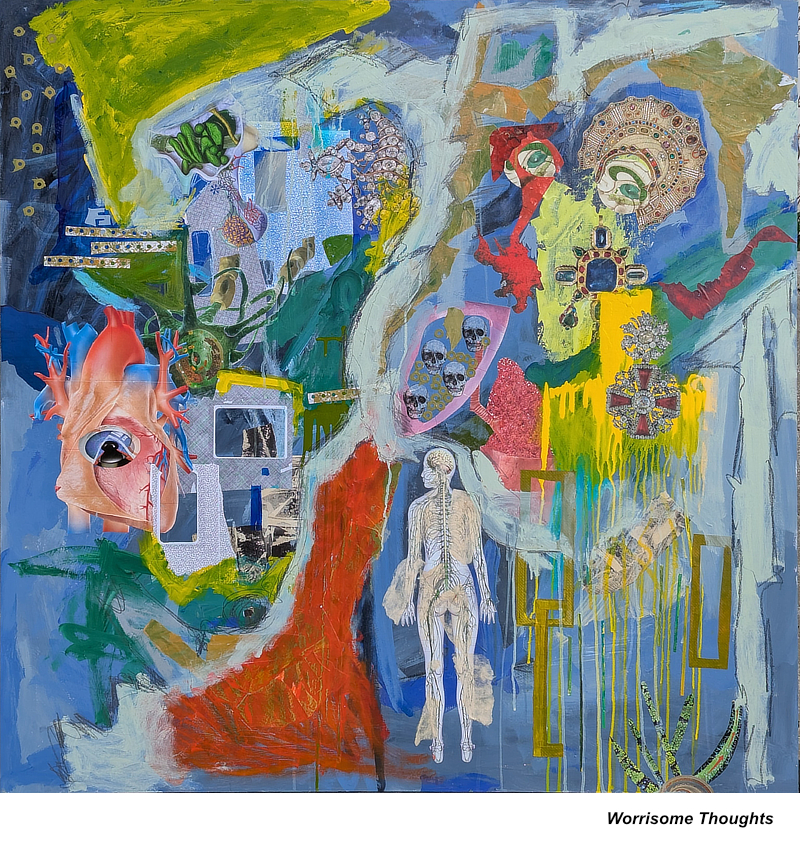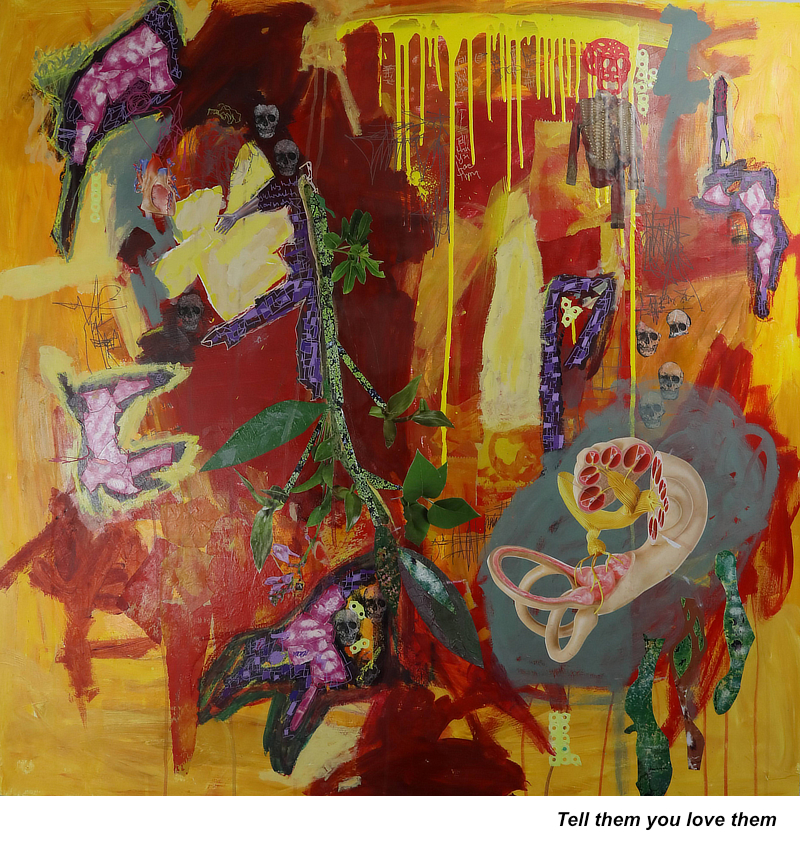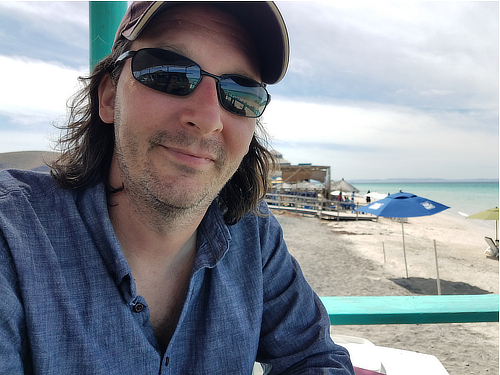
Tell a little bit about how you first got into creating art.
I’ve been making visual art seriously for about twenty years, but I come from a music background—specifically jazz and improvised music. Visual art started as a private practice for me, a way to reconnect with the kind of freedom and spontaneity I wanted to feel in music.
I never initially thought of it as something to share publicly, but over time it grew into a parallel creative language—one that feeds and informs my music, and vice versa.
What artists or movements have had an impact on you?
Visually, I’ve been deeply influenced by many artists. Recently, Ive been looking at Jasper Johns and Franz Kline a lot. I’m drawn to the physicality of their work, the way they layer gesture, symbol, and surface. There’s a kind of emotional density and improvisational energy in their paintings that really resonates with me. I also find inspiration in artists who work with collage and found materials—those who treat the process as discovery.
Musically, John Coltrane has been a lifelong influence, especially his later work where he was pushing the boundaries of sound, spirit, and form. Pierre Boulez has also had a big impact on the way I think about the structure and complexity—his ability to sculpt dense, expressive sonic worlds continues to influence how I approach sound and even visual composition. Both artists modeled a fearless commitment to exploration, which is something that's important to me.
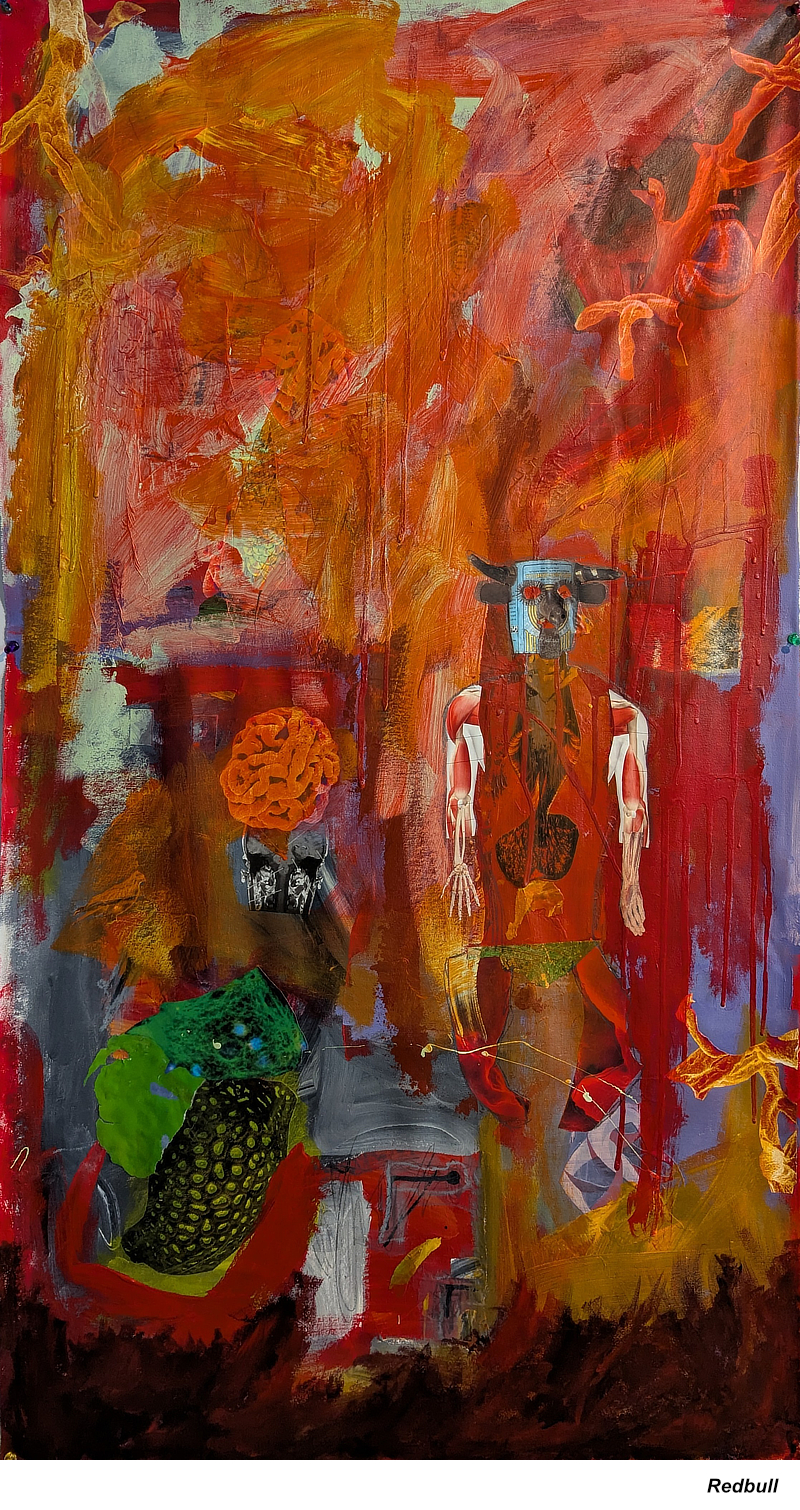
I want the work to feel alive—like it’s in conversation with the viewer, or maybe even with itself
What is your source of inspiration?
Improvisation is at the heart of everything I do—both in music and visual art. I’m inspired by what happens when you approach a blank surface (or silence) and let things emerge without preconception. My mood, the materials at hand, current events, and subconscious imagery all play a role. I’m also inspired by the act of observation and by looking inward—many of my pieces end up being a kind of self-portrait, even when they’re abstract.
What themes does your work involve?
There’s a strong undercurrent of introspection and emotional landscape in my work. I often explore identity, perception, and the subconscious, but not in a literal or narrative way. Symbolic forms show up—sometimes repeated, sometimes just once—and I don’t try to pin them down. I’m interested in the tension between improvisation and intentionality, and in letting symbols emerge organically through a process. Lately, I’ve been working on a series about the four elements—earth, air, fire, and water—which gives me a loose structure while still leaving room for intuition.
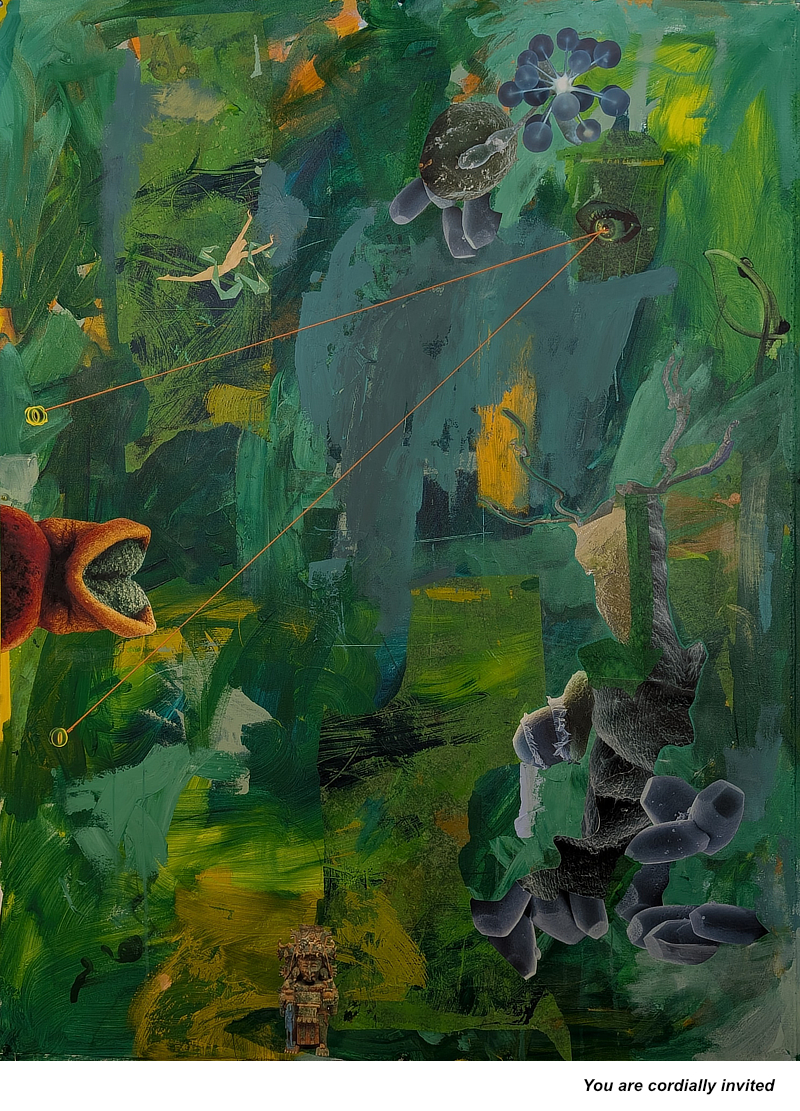
I like how collage can disrupt or reframe meaning, and how it brings in layers of time and memory
What is important to you about the visual experiences you create?I want the work to feel alive—like it’s in conversation with the viewer, or maybe even with itself. I’m less interested in delivering a message than in opening a space where people can bring their own interpretations. I hope there’s something resonant in the balance between rawness and subtlety, between clarity and ambiguity. If someone feels something they can’t quite name when they see the work, I feel like I’ve done my job.
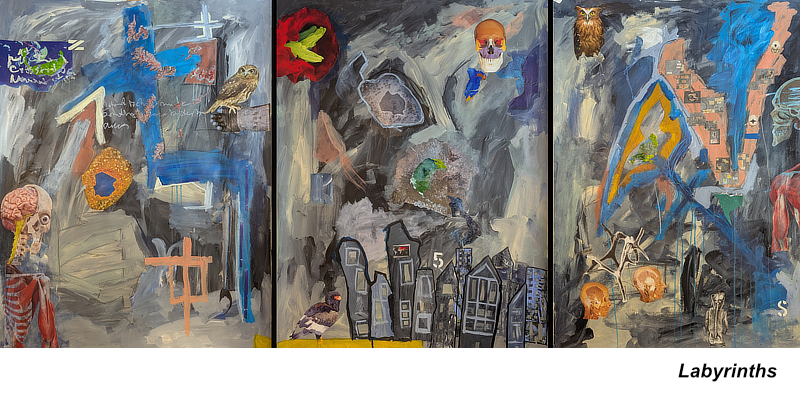
Do you work from memory, life, photographs, or from other resources? Describe your creative process.
My creative process is rooted in improvisation, but I also draw a lot from my sketchbooks. I keep several going at once, and they’re full of quick drawings, compositional ideas, and intuitive marks. Sometimes those sketches act as loose blueprints for paintings or mixed media pieces, though I never follow them too strictly. They’re more like a starting point or a mood reference.
Collage is also a central part of my process. I work with images I find in discarded books—especially ones that feel mysterious or evocative—and abstract them, cut them up, or recontextualize them entirely. I like how collage can disrupt or reframe meaning, and how it brings in layers of time and memory. I combine those elements with acrylic paint, oil stick, pastel, pencil, and crayon—usually on found surfaces like cardboard. Everything builds in layers, with some things hidden and others revealed. It’s all very tactile and responsive.
What is your favorite art accident? Did it change your perspective?
One that stands out is when I unintentionally scraped through several layers of paint on a piece I thought was finished. It revealed something unexpected underneath—this raw, beautiful interaction between layers. That moment taught me not to treat any part of the work as too precious. Now I often use that kind of excavation as a technique. It’s a reminder that the painting has its own memory and that the “mistakes” often carry the most energy.
Do you have any artistic goals for the future that you would like to share?
Yes—I’m at a point where I want to bring my visual art further into the world. I’ve shown in one group exhibition so far, and I’d love to work toward a solo show. I’m also interested in connecting more with the visual arts community in Seattle, where I recently returned after time in New York. Long-term, I’d love to create immersive experiences that bring together my visual work with sound—especially combining acoustic instruments, electronics, and projected imagery in a live setting.
